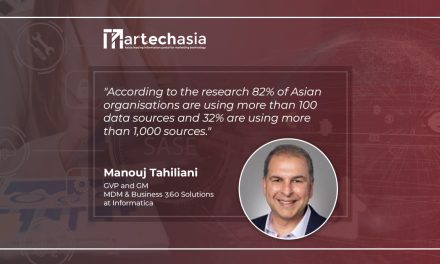Regional heads and CEOs shared their influencer marketing insights and digital marketing strategies that brands should implement this year to capture the attention of the majority of consumers consisting of Gen Zs and Millennials.
Influencer marketing is a very in-demand digital marketing tactic that many brands are considering implementing this year. But what are the latest trends marketers need to know to help them run a successful influencer marketing campaign this 2022?
The following insights were shared at an EventX webinar entitled Asia Influencer Marketing Trends 2022 early this year by three regional heads and CEOs from the marketing industry.
Gaming and ESPORTS Are Top Influencers
Ferdinand Gutierrez, CEO & Co-Founder of Ampverse, talked about entertainment sports (ESPORTS) as the future of influencer marketing.
Digital marketing will focus more on entertainment sports (ESPORTS) influencer marketing across different social media platforms in 2022. Gaming marketing experts foresee ESPORTS as the most effective engagement-driving marketing tactic.
According to Gutierrez, “Gen Zs and Millennials are hard to reach. They use ad-blockers because they hate ads. Brands can transcend gaming to become relevant in the mass market space by finding a hero, an athlete, and creating a story to humanize them.”
Athletes are today’s modern heroes and brand ambassadors. With their inspiring stories, they build loyal fans and stronger brands. It’s not surprising why many big brands are becoming more active and visible in mainstream sports, humanizing athletes by telling their stories and subtly incorporating their products and services to capture the sports fans’ trust and win their business.
“Gen Zs and Millennials seek a sense of belonging and growth. They value authenticity, and loyalty is based on protecting that voice,” Gutierrez added. When working with gaming influencers to promote your brand, it’s important to preserve their authenticity by not being too advertorial or pushy.
Companies can seek influencer marketing opportunities through crypto gaming and ESPORTS. Even gaming and ESPORTS apply to the B2B market because of sponsorships. For instance, golf athletes can represent B2B brands nicely, showing that they are looked upon as legitimate and are valuable players in the industry.
Virtual Idols, NFTs, and Virtual Art Are Popular
Edwin Wong, CEO of Cloudbreakr, discussed the essential trends of influencer marketing in 2022.
Why do marketers need to talk about virtual idols, NFTs, virtual art, and influencers?
Virtual idols, unique digital collectibles or non-fungible tokens (NFTs), and virtual art are booming. “Creator community has been identified as an essential marketing channel for NFT collections, where brand-owned NFTs and influencer marketing are moving closer to foster the community of loyal collections, fans, and customers.”, Wong explained.
Virtual idols are the gateway of brands to the metaverse and new digital experiences. Marketers can use them as neutral content identities and channels to create more flexible influencer marketing campaign formats, highly customisable brands, and a higher engagement rate.
In addition, brands leverage the fan community to promote non-fungible tokens, wherein NFTs are the future of content and digital engagement, interacting with digital assets on the metaverse. According to Wong, about 81% of Millennials are aware that NFTs are booming, and 27% are familiar with it. Many of them are considering buying at least one collection as a long-term investment.
Wong also shared his insights on developing a pool of Key Opinion Consumers (KOCs). He said that it’s crucial to use a data-driven approach to shortlist KOCs and nano-influencers following the brands, engaging them to become brand ambassadors.
Social Media Players and Formats Are Changing
Mai Endo, the Deputy Head of Marketing Operation (Casting, AnyChat) of AnyMind Group, outlined and explained the different top social media platforms in each country, specifically in Southeast Asia.
“Social media platform usage by influencers has changed, wherein YouTube is still the king across the Asian market. The increase in influencer’s usage of Facebook was driven by the likes of Vietnam and Myanmar, while Instagram was driven by Japan, Malaysia, the Philippines, and Hong Kong,” said Endo.
Awareness social media campaigns are still popular, mostly used during sales seasons, and performance campaigns are growing. Thailand, Malaysia, and Indonesia ran performance-driven campaigns. Japan, India, and the Philippines ran campaigns to increase mass awareness (AnyMind, State of Influence in Asia 2021).
In Japan, content users and formats have changed, wherein young generations have shifted from “short video” to “long video” formats. This trend is effective for brand awareness and performance to drive purchasing. Influencers are likely to support brand content ads or ads run by influencers, with more views, engagements, conversion rate, and reaches on all platforms.
As more APAC businesses acknowledge the value of influencers in promoting their products and services, the marketing spend remains high for this digital marketing strategy. Brands can take their sales and marketing to the highest level with the latest influencer marketing trends, such as gaming, ESPORTS, virtual idols, NFTs, and social media nano influencer partnerships.



















